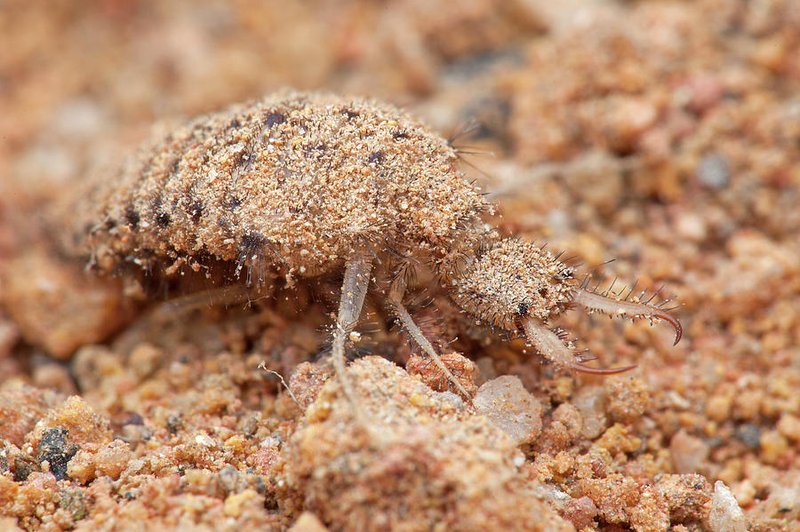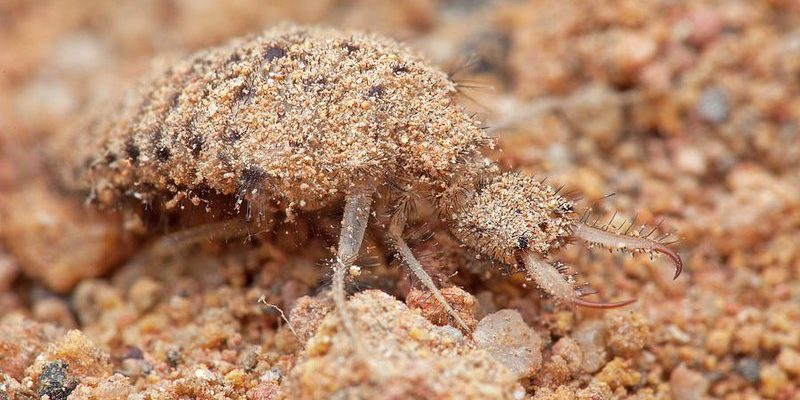
Imagine having a tiny detective in the soil, gathering clues about the ecosystem around it. Ant lion larvae, known for their distinctive funnel-shaped pits, play a crucial role in bioindication. This means they can signal changes in environmental conditions, much like a canary in a coal mine. If the ant lion larvae are thriving, it’s a good sign that the local ecosystem is healthy. If their populations dwindle, that could be a red flag indicating issues like pollution or habitat destruction. Let’s dig a little deeper into how we can use these remarkable larvae for environmental monitoring.
What are Ant Lion Larvae?
Ant lion larvae are the juvenile stage of ant lions, which belong to the family Myrmeleontidae. These larvae are notorious for their unique hunting tactics. They create conical pits in sandy soil to trap unsuspecting ants and other small insects. Once their prey falls into the pit, the larvae use their powerful jaws to snatch them up. It’s like watching a skilled predator at work—a real-life nature documentary!
These larvae can grow quite large, some reaching lengths of up to 2 inches. They have a somewhat alien look, with elongated bodies and large mandibles that make them seem quite intimidating, even though they’re harmless to humans. Their presence in an ecosystem is often a sign of a balanced environment. The unique life cycle of ant lions, which includes a pupal stage where they transform into adults, also makes them particularly interesting for monitoring environmental changes over time.
Why Use Ant Lion Larvae for Environmental Monitoring?
You might be wondering, “Why focus on ant lion larvae when there are so many other species out there?” Great question! One of the biggest reasons is their sensitivity to environmental changes. Like many insects, ant lion larvae respond quickly to shifts in factors like temperature, soil moisture, and pollution levels. This sensitivity makes them excellent *bioindicators*, helping scientists understand how ecosystems are faring.
Another reason is their widespread distribution. Ant lions can be found in various habitats, from sandy deserts to forest floors. This makes them a versatile option for environmental studies across different regions. Plus, monitoring their populations is relatively straightforward. Researchers can set up simple traps or observe natural pits to gauge the abundance of these larvae, making it an accessible method for scientists and volunteers alike.
How Do Ant Lion Larvae Indicate Environmental Health?
To grasp how ant lion larvae serve as indicators, let’s break it down. These larvae thrive in clean, undisturbed environments. If pollution or habitat changes occur, you will likely see a decline in their populations. This makes them a sort of *early warning system* for detecting environmental stressors.
Researchers study the abundance and behavior of ant lion larvae in different areas to get a clear picture of environmental health. For instance, in areas with high pollution, you might find fewer larvae or smaller-sized individuals. In contrast, a thriving population of ant lions suggests a healthy ecosystem. They help give us the bigger picture, showing how human activities and natural changes can impact the interconnected web of life.
Practical Methods of Monitoring with Ant Lion Larvae
So, how do researchers actually monitor ant lion larvae? It’s a pretty straightforward process. Here are some common methods:
- Site Selection: Researchers choose various locations to study, focusing on both disturbed and undisturbed environments.
- Trap Installation: Simple traps can be created using plastic cups filled with sand. The larvae fall into the cups while hunting and are collected for counting and measuring.
- Observation of Natural Pits: In areas where ant lions create natural pits, researchers can observe and count the number of pits and larvae present.
- Data Analysis: After collecting data, researchers analyze it to spot trends, such as changes in population size or larval health across different locations.
These techniques lend themselves to citizen science as well. Schools, community groups, and environmental enthusiasts can get involved in monitoring efforts, making it a fun way to learn about local ecosystems while contributing valuable data.
Limitations and Challenges
While using ant lion larvae for environmental monitoring is promising, there are challenges to consider. One limitation is the larvae’s habitat preference. They tend to thrive in sandy or loose soil, which means they may not be present in all ecosystems. This can limit their effectiveness as bioindicators in certain habitats, such as wetlands or heavily urbanized areas.
Another challenge is seasonal variability. Ant lion larvae may enter a dormant phase during harsh weather conditions, leading to fluctuations in their populations. This variability can make it harder to collect consistent data. However, researchers are continually adapting methods to address these limitations, making the practice increasingly reliable.
Comparing Ant Lion Larvae to Other Bioindicators
When you think about environmental monitoring, ant lion larvae are just one of many bioindicators out there. Some others include mayflies, caddisflies, and various fish species. Here’s how ant lion larvae stack up against these alternatives:
- Ant Lion Larvae: Excellent for monitoring soil health and ecosystem balance. Their presence indicates clean environments.
- Mayflies: Often used to assess water quality, as they are highly sensitive to pollution.
- Caddisflies: Similar to mayflies, they also indicate water quality and can show different levels of pollution tolerance.
While each type of bioindicator serves its purpose, ant lion larvae offer unique advantages, particularly in terrestrial ecosystems. Their ground-dwelling habits and response to environmental changes provide a different layer of understanding when monitoring ecosystem health.
Future of Environmental Monitoring with Ant Lion Larvae
The future looks bright for using ant lion larvae in environmental monitoring. As more researchers begin to recognize their value, we’re likely to see a surge in studies focusing on these unique creatures. Advances in technology may also enhance monitoring techniques, allowing for better tracking of populations and health indicators.
Additionally, integrating citizen science initiatives can elevate community involvement. Imagine schools partnering with local scientists to monitor ant lion populations, fostering a sense of stewardship for the environment while educating students about ecology. It’s a win-win situation, bringing awareness and actionable insights into local ecosystems.
Ant lion larvae are more than just quirky insects; they are vital allies in environmental monitoring. Their sensitivity to changes in the ecosystem makes them excellent bioindicators, helping scientists and communities alike understand the health of our natural world. By exploring their populations and behaviors, we gain insights into broader environmental issues, from pollution to habitat loss.
As we continue to explore the significance of these tiny predators, we can harness their potential to foster a healthier planet. Who knew that such a small creature could have such a big impact on understanding our environment? So, next time you spot an ant lion pit in the sand, remember: you’re looking at a tiny detective, working hard to tell the story of its environment.

